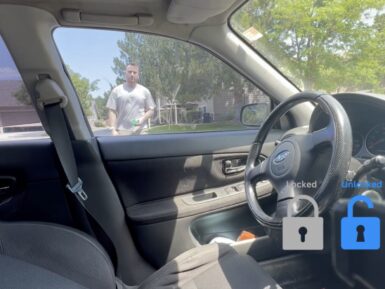
Overview
Even though Arduino Education kits are jam-packed with everything you need, we know that mislaying parts in the excitement of getting hands-on in a classroom can sometimes happen.
In the Arduino Replacements Pack, you’ll find all the common electronics parts two students may need to complete their projects.
This pack has replacement parts for the Arduino Starter Kit Classroom Pack, Arduino Student Kit, Arduino Education Starter Kit, Arduino CTC 101 and ARDUINO CTC GO! - CORE MODULE.
The pack contains a total of 183 replacement parts, including a breadboard, jump wires, LEDs, resistors, transistors, sensors, and more. (It doesn’t include motors, as you’ll find they’re not lost as often! But if you do need a new motor, board, or USB cable, you can find them all in our online store.)
Note that for larger products such as CTC GO!, you may need more than one pack of replacement parts.
Tech specs
The Arduino Replacement Pack includes:
- 1 Breadboard Assembly
- 10 Jumper Wires
- 5 Red LEDs
- 5 Green LEDs
- 5 Yellow LEDs
- 10 220Ω Resistors
- 5 680Ω Resistors
- 5 560Ω Resistors
- 5 470Ω Resistors
- 5 1.2 KΩ Resistors
- 5 10 KΩ Resistors
- 5 1 KΩ Resistors
- 5 4.7 KΩ Resistors
- 5 10 MΩ Resistors
- 5 1 MΩ Resistors
- 2 100 uF capacitor
- 2 Phototransistors
- 2 Piezos
- 5 Push Buttons
- 5 Potentiometers
- 5 Knobs for potentiometer
- 1 Battery Wire 9V - open lead
- 1 Zener diode
- 1 Temperature sensor
- 1 Optocoupler
- 1 Mosfet transistors
- 1 Tilt sensor
- 1 Steel ball 12 mm diameter
Resources for Safety and Products
Manufacturer Information
The production information includes the address and related details of the product manufacturer.
Arduino S.r.l.
Via Andrea Appiani, 25
Monza, MB, IT, 20900
https://www.arduino.cc/
Responsible Person in the EU
An EU-based economic operator who ensures the product's compliance with the required regulations.
Arduino S.r.l.
Via Andrea Appiani, 25
Monza, MB, IT, 20900
Phone: +39 0113157477
Email: support@arduino.cc
Get Inspired
Robot using Arduino Nano 33 BLE Camera Shield.

A lot of newer cars have a really nifty feature called “proximity unlock,” which automatically unlocks the doors when the driver approaches while carrying their key fob. When paired with a push-to-start ignition switch, the driver never has to take their keys out of their pocket. But Nick’s 2004 Subaru STI is too old to have come with that feature from the factory, so he used a couple of Arduino boards to create a DIY proximity unlock system. Car manufacturers need to pay serious attention to security when designing their access and ignition systems, but Nick had a bit more freedom. It is unlikely that any thieves would suspect his car of possessing a feature like this and so they wouldn’t even bother trying to hack it. Nick’s proximity unlock works by evaluating the received signal strength indicator (RSSI) of Bluetooth® Low Energy connection. If all else is equal, RSSI is inversely proportional to distance and that makes it useful for rough proximity detection. An Arduino Nano 33 BLE inside the car unlocks the doors when it has an active BLE connection with an RSSI over a set threshold. It unlocks the doors by shorting the switch with a 12V relay and it receives power from the car’s 12V system through a buck converter. The driver-carried device (equivalent to a key fob) can be either another Nano 33 BLE or Nick’s smartphone. In fact, it can be any device with a BLE adapter, so long as it can connect to the in-car Arduino with the proper device name. Now, Nick can enjoy his classic car and the convenience of proximity unlock.








